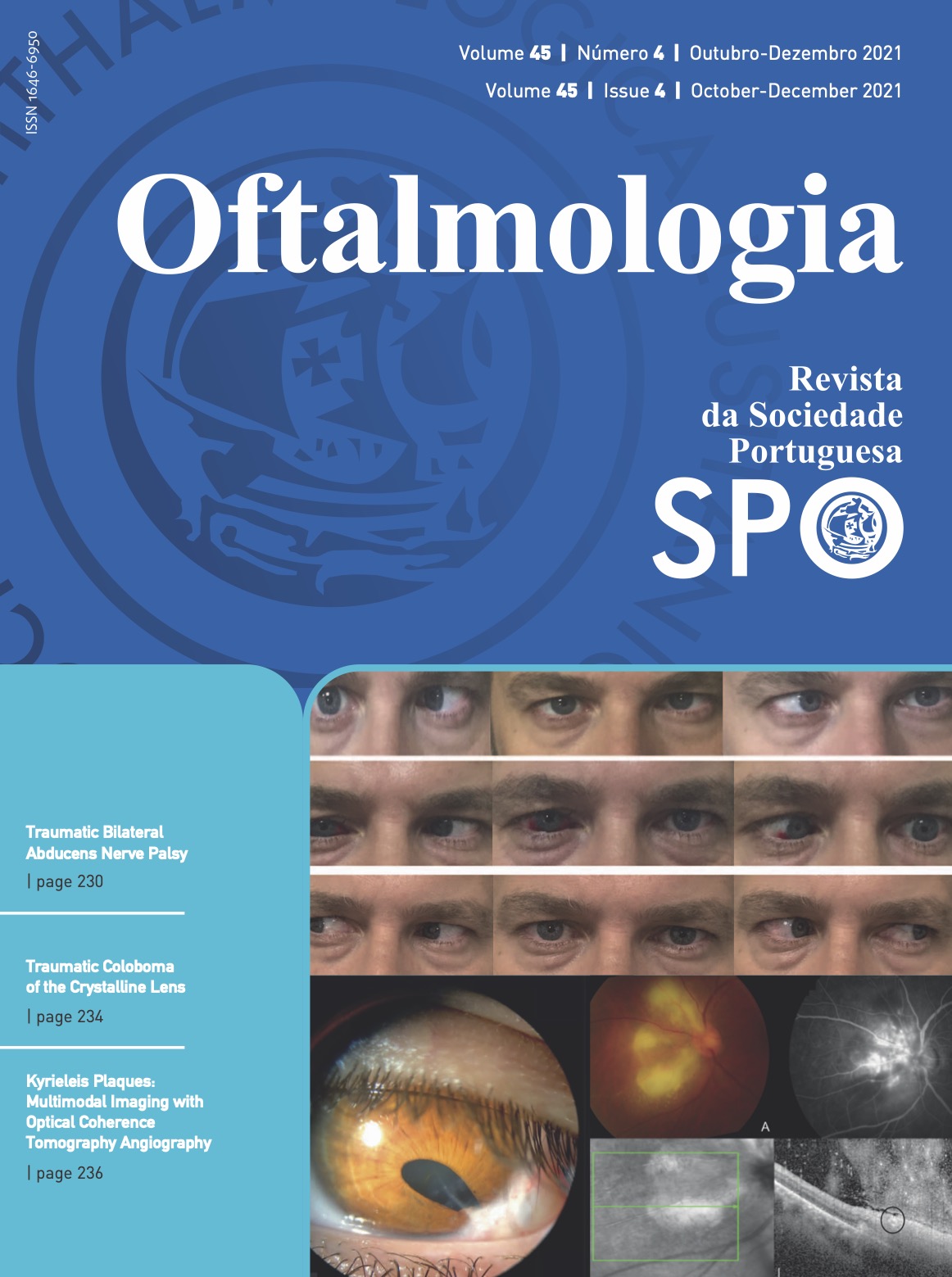Traumatic Bilateral Abducens Nerve Palsy
DOI:
https://doi.org/10.48560/rspo.24346Keywords:
Abducens Nerve Injury/drug therapy, Botulinum Toxins/therapeutic useAbstract
Introduction: Our purpose was to report a case of severe traumatic bilateral sixth nerve palsy. We describe a clinical case documented with photographs on different gazes; Hess screen charts and Goldmann visual field tests over time.
Case Report: A 42-year-old male was involved in a high-energy car crash (240 km/h). Nine days after, when transferred to our hospital, he presented with severe bilateral sixth nerve palsy, with limitation in the abduction of right and left eye, without crossing the midline. He was submitted to 3 rounds of medial rectus botulinum toxin (BTX) injections. The first done 1 month and the last 6 months after the accident. He achieved good results with no diplopia and no abduction limitations.
Conclusion: Although the bilateral involvement and the severity of the abduction deficit in sixth nerve palsy are independently associated with a poor outcome, our clinical case had a good outcome with total and definitive recuperation of severe bilateral palsy after medial rectus BTX injections started in the acute phase.
Downloads
References
Richards BW, Jones Jr FR, Younge BR. Causes and prognosis in 4278 cases of paralytic oculomotor, trochlear and abducenscranial nerves. Am J Ophthalmol.1992; 113:489-96.
Jaiswal M, Jain S, Gandhi A, Sharma A, Mittal RS. A rare case of post traumatic isolated bilateral abducens nerve palsy. Romanian Neurosurg. 2014; 4:497-9.
Azarmina M, Azarmina H. The six syndromes of the sixth cranial nerve. J Ophthalmic Vis Res. 2013; 8:160–71.
Arias MJ. Bilateral traumatic abducens nerve palsy without skull fracture and with cervical spine fracture: case report and review of the literature. Neurosurgery. 1985;16:232-4.
Fam DJ, Baharnoori M, Kassardjian CD, Saposnik G. Posttraumatic Bilateral Abducens Nerve Palsy: Mechanism of Injury and Prognosis. Can J Neurol Sci. 2015; 42:344-6.
Holmes JM, Droste PJ, Beck RW. The natural history of acute traumatic sixth nerve palsy or paresis. J AAPOS. 1998; 2:265.
Holmes JM, Beck RW, Kip KE, Droste PJ, Leske DA; Pediatric Eye Disease Investigator Group. Predictors of nonrecovery in acute traumatic sixth nerve palsy and paresis. Ophthalmology. 2001; 108:1457-60. doi: 10.1016/s0161-6420(01)00633-9.
Hung HL, Kao LY, Sun MH. Botulinum toxin treatment for acute traumatic complete sixth nerve palsy. Eye. 2005; 19:337-41. doi: 10.1038/sj.eye.6701460.
Marais W, Barret S. An overview of the third, fourth and sixth cranial nerve palsies. Contin Med Educ 2013; 31:147-52.
Repka MX, Lam GC, MorrisonNA. The efficacy of botulinum neurotoxin A for the treatment of complete and partially recovered chronic sixth nerve palsy. J Pediatr Ophthalmol Strabismus 1994; 31:79-83.
Salari M, Sharma S, Jog MS. Botulinum Toxin Induced Atrophy: An Uncharted Territory. Toxins. 2018; 10:313.
Gardner R, Dawson EL, Adams GG, Lee JP. Long-term management of strabismus with multiple repeated injections of botulinum toxin. J AAPOS. 2008; 12:569-75.
Porter JD, Strebeck S, Capra NF. Botulinum-induced changes in monkey eyelid muscle. Comparison with changes seen in extraocular muscle. Arch Ophthalmol. 1991; 109:396-404.
Downloads
Published
How to Cite
Issue
Section
License
Copyright (c) 2021 Revista Sociedade Portuguesa de Oftalmologia

This work is licensed under a Creative Commons Attribution-NonCommercial 4.0 International License.
Do not forget to download the Authorship responsibility statement/Authorization for Publication and Conflict of Interest.
The article can only be submitted with these two documents.
To obtain the Authorship responsibility statement/Authorization for Publication file, click here.
To obtain the Conflict of Interest file (ICMJE template), click here





